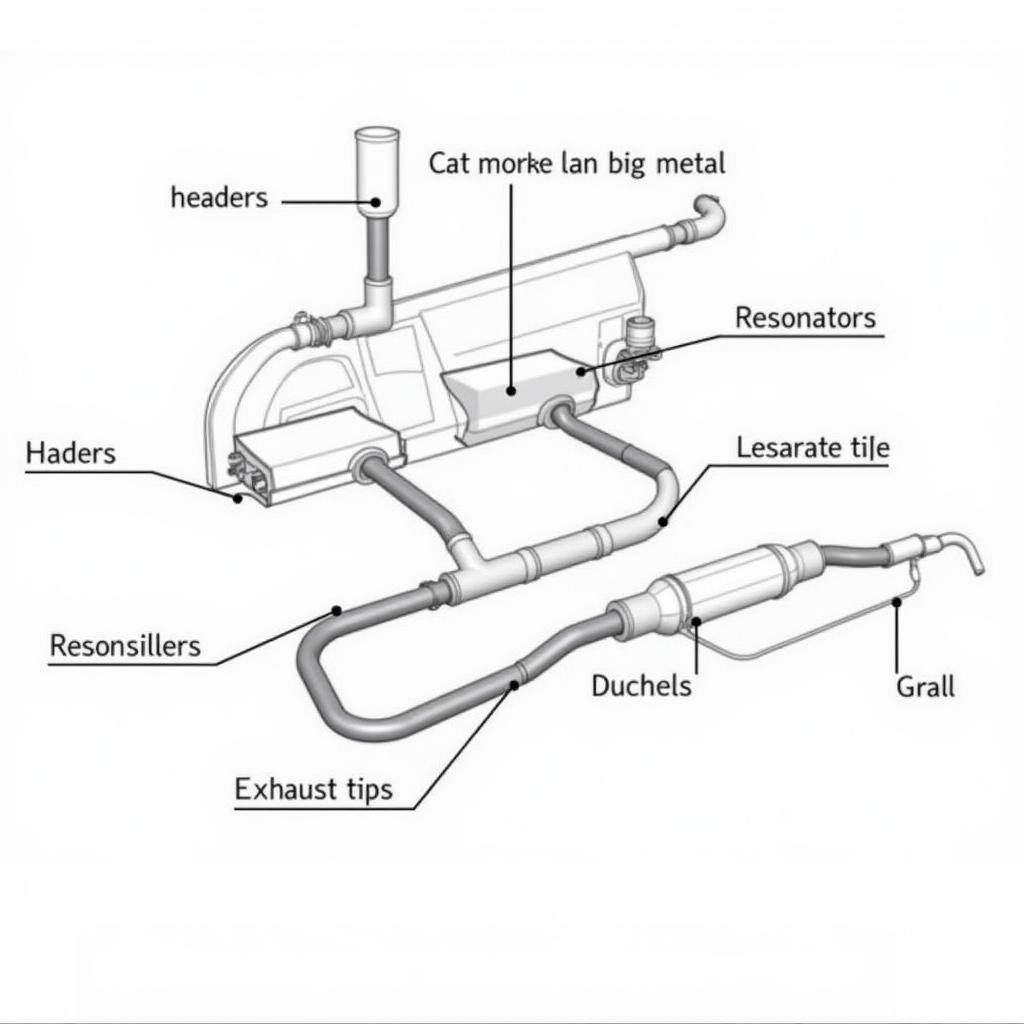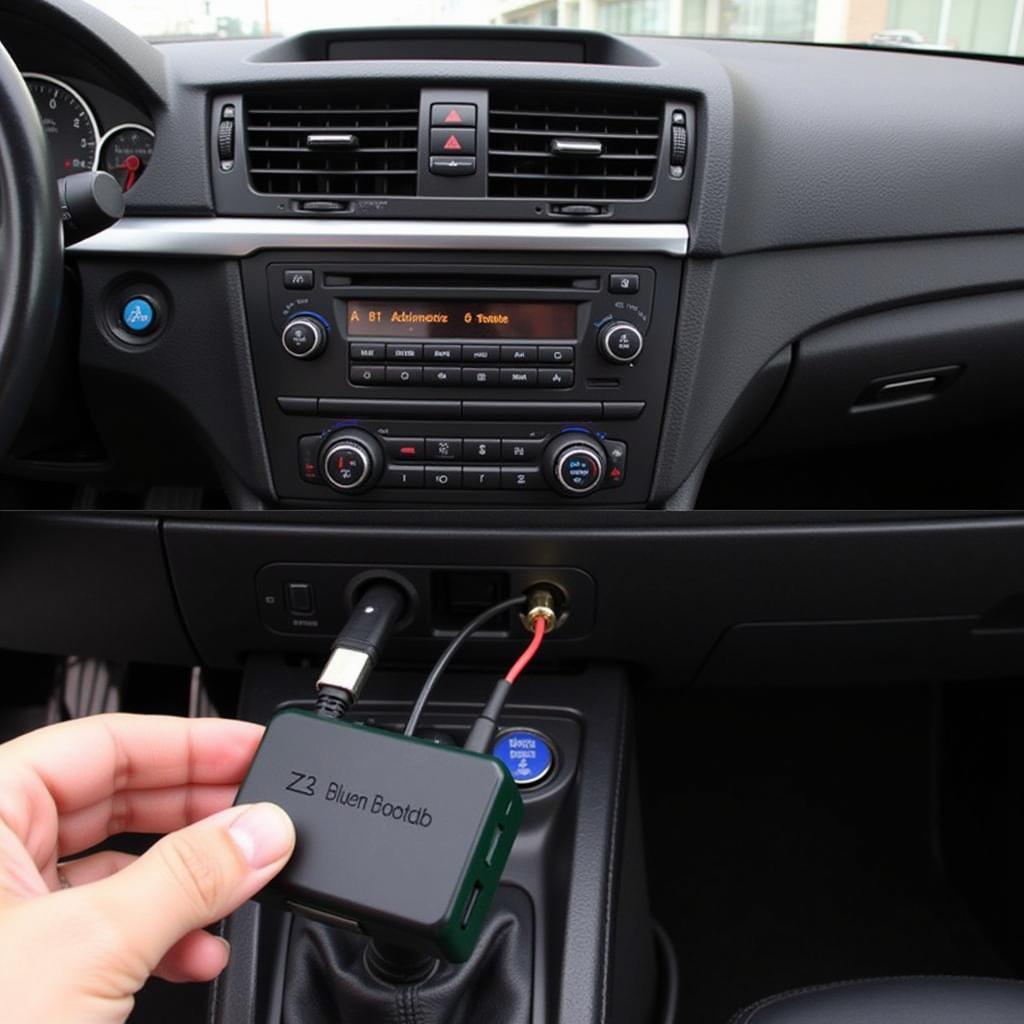The iconic 1974 BMW 2002, a masterpiece of German engineering, is admired for its performance and timeless design. However, like many classic cars, its engine noise can be a bit intrusive by today’s standards. If you’re looking to enjoy a quieter, more comfortable ride in your vintage BMW, engine sound proofing is the solution. This guide will delve into the intricacies of soundproofing your 1974 BMW 2002’s engine, providing you with the knowledge to achieve a serene driving experience.
Understanding the Sources of Engine Noise
Before we delve into the soundproofing process, it’s crucial to understand where the noise originates. In a 1974 BMW 2002, engine noise stems from several key areas:
- Engine Bay: The engine itself generates significant noise and vibration.
- Firewall: This thin metal panel separates the engine bay from the passenger compartment and is a primary pathway for noise transmission.
- Transmission Tunnel: Noise from the gearbox and driveshaft can travel through the transmission tunnel.
- Floor Pan: Vibrations from the engine and road noise can resonate through the floor pan.
Effective Sound Deadening Materials
Sound deadening materials are designed to absorb sound waves and dampen vibrations, preventing them from passing through. Here are some effective options:
- Butyl Rubber Sheets: Butyl rubber is a dense, flexible material that excels at absorbing vibrations. It’s ideal for applying to the firewall, floor pan, and transmission tunnel.
- Closed-Cell Foam: Closed-cell foam provides excellent sound insulation by trapping air within its cells. It’s commonly used on the firewall and hood.
- Mass-Loaded Vinyl (MLV): MLV is a thin, heavy material that effectively blocks sound waves. It’s best used in conjunction with other materials, such as butyl rubber.
Sound Proofing Your 1974 BMW 2002: A Step-by-Step Guide
Soundproofing your BMW 2002’s engine is a manageable project that can be done in stages. Here’s a step-by-step approach:
1. Preparation is Key
- Gather Your Materials: Ensure you have ample sound deadening materials, a utility knife, roller, cleaning supplies, and safety gear.
- Prepare the Vehicle: Disconnect the battery and allow the engine to cool down completely.
2. Firewall Soundproofing
- Remove Obstacles: Carefully remove any components obstructing access to the firewall from both the engine bay and the cabin.
- Clean Thoroughly: Use a degreaser to clean the firewall’s surface on both sides to ensure proper adhesion of the sound deadening materials.
- Apply Butyl Rubber: Cut butyl rubber sheets to fit the firewall contours and apply them firmly, using a roller to eliminate air bubbles. Overlap the sheets slightly for complete coverage.
- Add Closed-Cell Foam: Install a layer of closed-cell foam over the butyl rubber for additional sound absorption.
3. Floor Pan Sound Deadening
- Clean the Surface: Thoroughly clean the floor pan with a degreaser, removing any dirt or debris.
- Apply Butyl Rubber: Cut and apply butyl rubber sheets to the entire floor pan, paying close attention to the areas under the seats and footwells.
- Consider MLV (Optional): For maximum sound reduction, install a layer of MLV over the butyl rubber. Secure it with adhesive or specialized clips.
4. Transmission Tunnel Insulation
- Clean the Tunnel: Clean the transmission tunnel thoroughly to remove any grease or dirt.
- Apply Sound Deadening Materials: Apply butyl rubber sheets to the transmission tunnel, similar to the floor pan process. You can also use a combination of butyl rubber and closed-cell foam.
5. Hood Insulation
- Clean the Hood: Clean the underside of the hood to ensure proper material adhesion.
- Install Hood Liner: Many aftermarket hood liners are designed to absorb engine noise. Select one compatible with your 1974 BMW 2002 and install it according to the manufacturer’s instructions.
6. Reassemble and Enjoy the Silence
- Double-Check Your Work: Before reinstalling any removed components, carefully inspect your work to ensure all materials are properly applied.
- Reassemble Components: Reinstall all removed components, ensuring they are securely fastened.
- Test Drive: Take your BMW 2002 for a test drive and savor the quieter, more refined driving experience.
Expert Insights
“Many classic car owners don’t realize the significant difference proper sound deadening can make,” says Hans Schmidt, a veteran BMW mechanic with over 40 years of experience. “It’s not just about reducing noise; it’s about enhancing the entire driving experience, making it more comfortable and enjoyable.”
Maintaining Your Sound Proofing
While sound deadening materials are durable, proper maintenance can prolong their effectiveness:
- Regular Cleaning: Vacuum or wipe down the interior surfaces regularly to prevent dust and debris buildup on the materials.
- Inspection: Periodically inspect the materials for any signs of wear and tear, such as peeling or cracking. Replace damaged sections promptly.
Conclusion
Soundproofing your 1974 BMW 2002’s engine is an investment in a more enjoyable driving experience. By understanding the sources of engine noise and utilizing effective sound deadening techniques, you can transform your classic car into a haven of peace and quiet. Remember to choose high-quality materials, follow the steps carefully, and enjoy the rewarding results of a quieter, more refined ride.
For expert assistance with your 1974 BMW 2002 or any other automotive needs, contact Cardiagtech. We provide specialized diagnostic, programming, and remote software installation services. Reach us at +1 (641) 206-8880 or visit our workshop at 276 Reock St, City of Orange, NJ 07050, United States.



